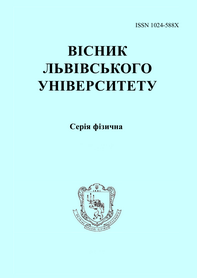DOI: https://doi.org/10.30970/vph.59.2022.42
Electrical conductivity of liquid Sn--Ag--Cu alloys with nanosized ceramic admixtures
Yu. Plevachuk, O. Tkach, M. Dufanets, V. Poverzhuk

| Visnyk of the Lviv University. Series Physics
59 (2022) с. 42-52
DOI: https://doi.org/10.30970/vph.59.2022.42 Electrical conductivity of liquid Sn--Ag--Cu alloys with nanosized ceramic admixturesYu. Plevachuk, O. Tkach, M. Dufanets, V. Poverzhuk |  |
Sn-based alloys, in particular the alloys of Sn–Ag–Cu (SAC) ternary system, are used as lead-free solders in the electronics industry and therefore are the subject of intensive research. One of the promising ways to improve the properties of such solders is the synthesis of nanocomposite materials, in which nanosized particles introduced into the basic bulk material allow (matrix) to control the properties in a wide range of physicochemical parameters. Therefore, the study of the influence of different nanosized particles like metals, ceramics or carbon nanotubes on the physical and mechanical properties of basic metal alloys has become particularly relevant. The tendency to reduce the size of joints in microelectronics increases the requirements for the reliability of solders, which can be achieved in new nanocomposite materials by introducing ceramic nanoparticles. One of the most common procedures for improving the mechanical properties of solder joints is the addition of oxide nanoparticles to the matrix alloys. In this work, the effect of nanosized ceramic impurities on the electrical conductivity of the alloy Sn94,56Ag4,14Cu1,29 was investigated experimentally in a wide temperature range of the solid and liquid states. Research results revealed that electrical conductivity is very sensitive even to a small amount of impurity elements. It was established that the addition of ceramic nanoparticles SiO2, TiO2, ZrO2 and Al2O3 reduces the absolute values of electrical conductivity. The experimental curves of dependence of electrical conductivity on temperature are approximated by a polynomial of the second degree. The results are explained by the increase in the number of crystal defects, which are centers of scattering of conduction electrons in metals, and lead to a decrease in electrical conductivity when adding nanosized ceramic impurities. According to the results of electrical conductivity were determined, the melting tem-peratures Tm and crystallization Ts of the investigated alloys. It was found that a small amount (up to 1 wt. \%) of nanosized ceramic impurities does not significantly affect the melting temperature of the basic alloy.